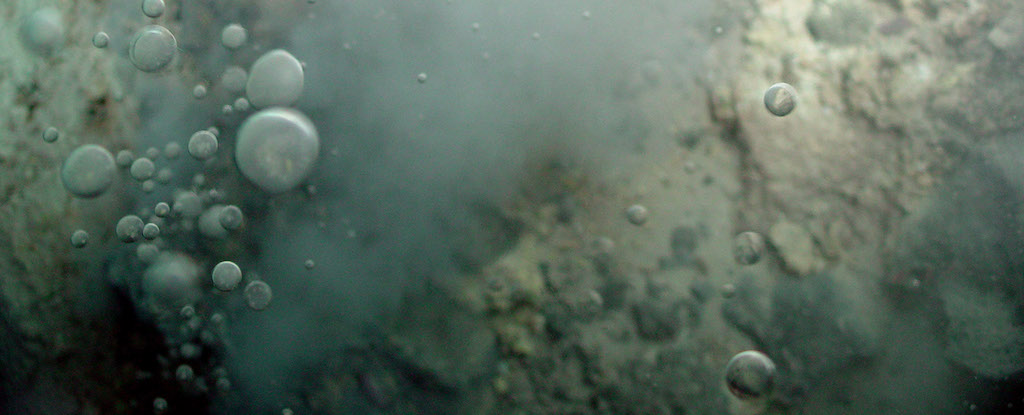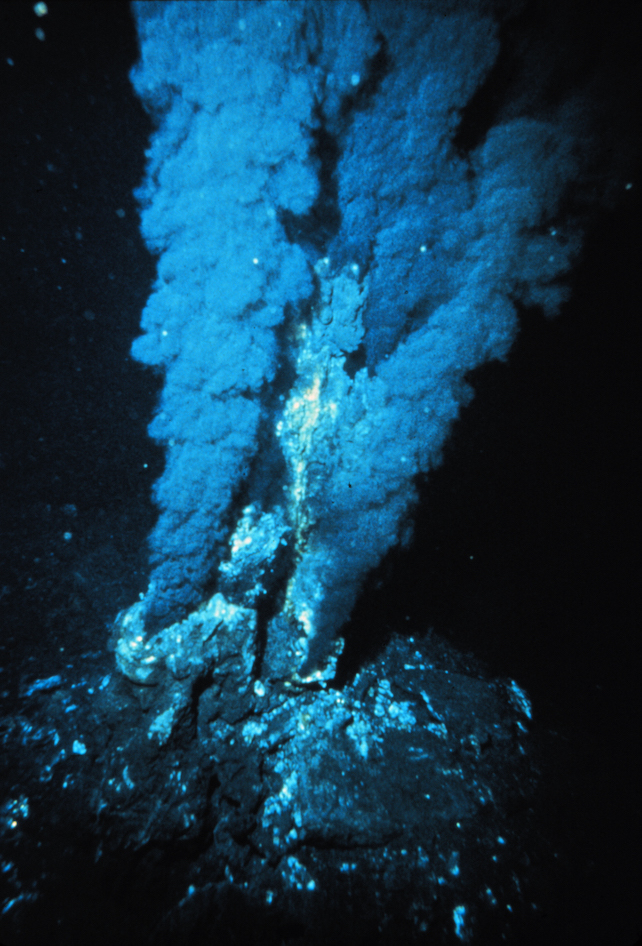
Unraveling the mystery of life’s origins over 3.5 billion years ago remains a scientific challenge. A recent study lends credence to the notion that essential elements of our earliest forebears originated from processes linked to age-old hydrothermal vents.
Among a cell’s distinctive traits, a prominent one is its lipid membrane, establishing a boundary that concentrates biochemistry internally while safeguarding it from external disorder.
Through blending hydrogen, bicarbonate, and iron-rich magnetite in a simulated ancient seawater environment, scientists from Newcastle University in the UK discovered the ability to produce a variety of organic compounds. This includes a set of long-chain fatty acids.
The researchers note that these extended-chain fatty acids are promising contenders for the creation of the Earth’s initial cell membranes. However, their precise origins still linger in obscurity.
Central to life’s inception are cellular compartments, crucial for isolating internal chemistry from the external environment,
says lead author Graham Purvis, a postdoctoral research associate at Durham University.
These compartments were instrumental in fostering life-sustaining reactions by concentrating chemicals and facilitating energy production,
he adds, potentially serving as the cornerstone of life’s earliest moments.
Many consider hydrothermal vents to be a probable environment for those initial moments, owing to their essential mix of heat and chemical components crucial for abiogenesis.

In a laboratory setting, the scientists replicated essential chemical characteristics of Earth’s ancient oceans, along with heated alkaline water designed to simulate the discharge from specific hydrothermal vents.
Combining hydrogen-rich fluids with CO2-rich seawater in the presence of magnetite, an iron-rich mineral available on Earth during that era, was part of their experimentation.
Extending up to 18 carbon atoms, the produced fatty acids exhibit distinct sections with hydrophilic (water-attracting) or hydrophobic (water-repelling) properties. This grants them the significant capability to spontaneously create organic ‘pockets’ in aquatic surroundings.
After conditions near ancient hydrothermal vents generated the necessary fatty acids for cell membrane formation, these membranes might have become entwined in the larger biochemical narrative that ultimately bestowed life upon Earth, as described by the authors.
While the details of the ancient narrative remain sparse, studies such as this one play a crucial role in bringing the puzzle pieces closer together.
The development of cell membranes marked a pivotal moment in Earth’s past. Despite numerous unanswered questions, this provides a captivating recreation of the plausible scenario for how it might have transpired.
We think that this research may provide the first step in how life originated on our planet,
says Jon Telling, a biochemist at Newcastle University.
Research in our laboratory now continues on determining the second key step,” he adds, and shedding more light on “the first potential ‘protocells’ that went on to form the first cellular life.
Beyond its significance for comprehending life on Earth, the researchers highlight that analogous reactions leading to membrane formation might be occurring in extraterrestrial oceans. This includes the icy moons like Europa and Enceladus.
The findings were documented in the journal Communications Earth & Environment.





